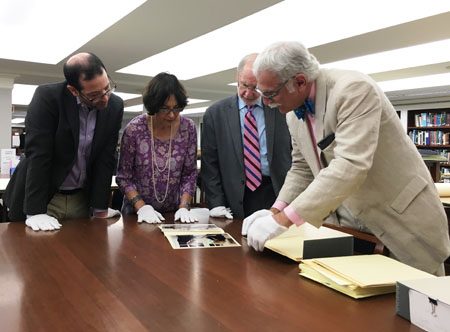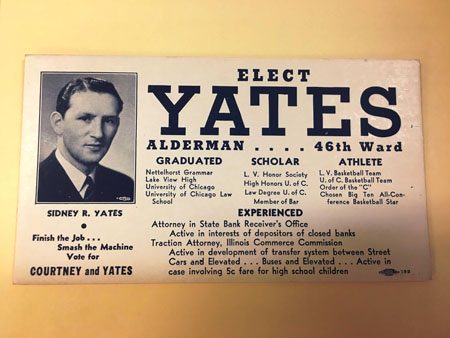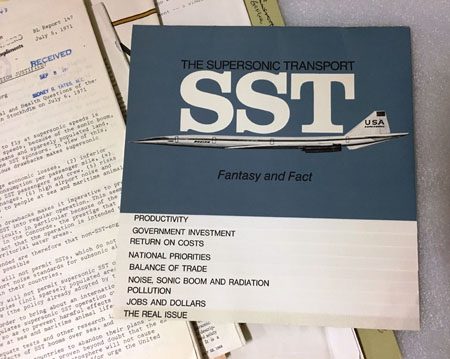Project archivist Adam Melville worked with CHM archivist Julie Wroblewski as part of his graduate school practicum. In this blog post, he describes how he processed one of our largest acquisitions in recent history.
This summer, I received the exciting but daunting opportunity to process the papers of US congressman Sidney R. Yates—a 262-linear-foot collection (the equivalent of more than 500 boxes) in ten weeks. Challenge accepted!
The first step was to determine my approach. Typically, an archivist begins by surveying a collection as a whole in order to develop a processing plan and formulate series in which the materials will be arranged intellectually. The sheer size of the Sidney Yates papers, however, coupled with the fact that most of it was in off-site storage, meant we would need to alter this workflow.
After some deliberation, Julie and I decided that I would start processing items and let the series arrangement unfold as I made my way through the collection. Now, this can be a risky approach since success rests on the unprocessed items being organized in the first place (which is not always the case). But seeing as these items had come from a congressional office, we hedged our bets and it paid off: over the decades, Yates had maintained a consistent filing method, and the vast majority of materials were highly organized.
For three months, I processed the Sidney Yates papers in batches, each comprised of approximately sixty boxes. I never knew what the next batch would bring, and the arrival of new boxes from storage was met with anticipation. About one hundred boxes into the project, I had a pretty firm idea of what the series arrangement would be, although Julie and I made revisions as we uncovered new items.

From left: Yates’s grandson, daughter-in-law, George Van Dusen (mayor of Skokie and one of the biographers), and Michael Dorf (co-biographer) examine the collection in our Research Center.
A somewhat unusual aspect of this project was that researchers were using the collection as it was being processed. This added some pressure to deliver quickly, but it also came with advantages, such as the ability to tap on-site subject experts for content knowledge. In addition, whereas a collection of this size would not normally include detailed descriptions of the contents of each box, since researchers needed immediate access to the materials, we developed a box inventory. Through some experimentation, we found a way to automate converting the working inventory into a more detailed finding aid, a technique which will help us process large collections in the future.

A promotional card urging Chicagoans to vote for Yates, c. 1940.
So who was Sidney Yates? A representative for the Illinois Ninth Congressional District for nearly fifty years, Yates is probably best known for his support of the arts and humanities. Other signature issues included advocating for the elderly, US support of Israel, and responsible environmental stewardship.

An informational booklet on supersonic transport.
A great feature of the Sidney R. Yates Papers is the breadth of subjects covered in the collection. Because of his lengthy career, the congressman was instrumental in a large range of subjects, including water diversion; Indiana Dunes National Lakeshore and radiation in US territories; Admiral Hyman Rickover and the development of the nuclear navy; supersonic transportation; the House Un-American Activities Committee; the National Endowment for the Arts; and Jewish topics including Chicago-area Jewish congregations and organizations, Soviet Jewry, Days of Remembrance, and the creation of the US Holocaust Memorial Museum.
Additional Resources